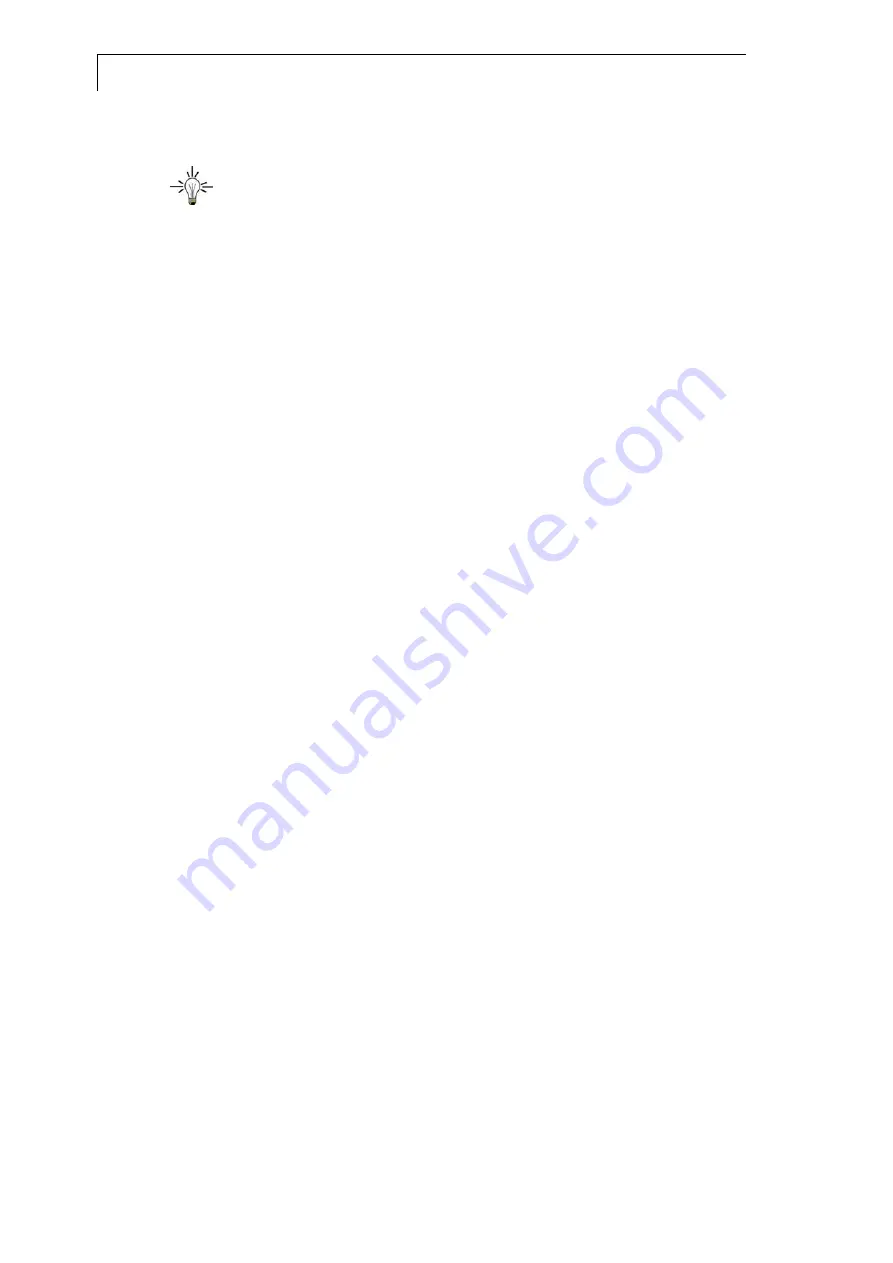
38
Simple Maintenance
2. The “Piston rods”, item {3.17} in Fig. 30, may be removed using
pliers. Grasp the tip of the piston using the pliers and pull it out
carefully in a straight line.
If the rods are broken, you must check the entire pump head for damage.
SOP 29
Disassembling the pump head
All position numbers of the items described refer to Fig. 30.
1. Apply SOP 28 “
Removing and checking piston rods”
.
2. Loosen the two retaining plate screws (item {3.19}) half of one turn,
alternating from one to the other to avoid damaging the retaining
plate. Because the two screws are very tight, it may be helpful to
either clamp the pump head or to press one of its side surfaces
against a table with one hand while loosening the screws.
3. Unscrew the two screws strictly alternating due to the strong force
of the springs (item {3.16}) behind the plate and remove them.
4. Remove the retaining plate, item {3.18}.
5. Remove the springs (item {3.16}).
6. Use a SW 5/16 spanner to loosen the spacing bolts, item {3.14}.
These bolts are seated very tightly. Follow the advice given in step
3.
7. Remove the pressure plate, item {3.13}.
8. Remove the pressure discs (item {3.20}) out from the pressure
plate (item {3.13}).
9. The easiest way to remove the piston seals (item {3.11a}) is to pull
them out using a 4mm gimlet or a screw of corresponding
diameter.
10. The piston seals (item {3.11}) located in the seal holder (item
{3.12}) are to be removed in the same manner.
11. To remove the seal holders from the housing (not necessary when
only exchanging the seals) please follow SOP 33 “
Cleaning check
valves”
on page 41 for guidelines on removing the check valves
(item {3.10}) as well as the distance holders (item {3.10a}).
12. The seal holders (item {3.12}) can then be removed from the
housing (item {3.4}).






























